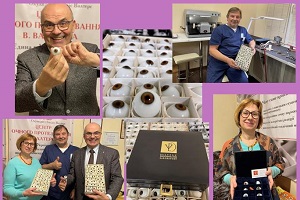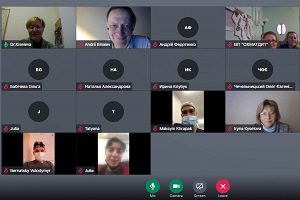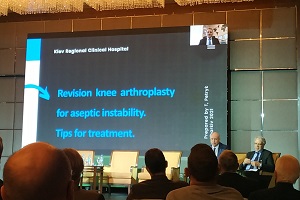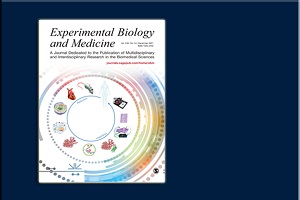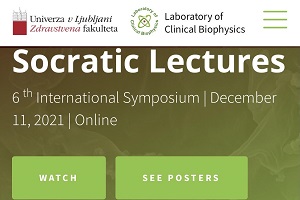- Details
Great news for ophthalmologists and pediatric ophthalmologists, students of the cycle of thematic improvement "Ophthalmoplasty and ophthalmic prosthetics", curated and lectured by Doctor of Medicine, Professor Oksana Petrenko. The Department of Ophthalmology of the Shupyk National Healthcare University of Ukraine has another base for practical classes "Walters Eye Prosthetics Laboratory", owned by the famous ocularist Valdis Walters.
- Details
The future potential of Ukrainian science forms today. That is why a university education and science are the defining links in the innovative development of society. And it will be based on today's PhD students.
- Details
On December 21, 2021, a local conference of the Association of Anaesthesiologists of Kyiv was held, which was devoted to topical issues of kidney transplantation. The conference was organized by the Association of Anaesthesiologists of Kyiv, the Department of Paediatric Anaesthesiology and Intensive Care of Shupyk National Healthcare University of Ukraine and the National Institute of Surgery and Transplantology named after O. O. Shalimov. .
- Details
From 15 Oct 2021 to 16 Oct 2021 scientific - pedagogical staff of the Department of Orthopedics and Traumatology №2 took part in the 2nd International Conference "Advanced methods of treatment of pathology of the hip, knee and shoulder joints" in Kharkiv.
- Details
Dear colleagues! The Department of Endocrinology is pleased to announce that the article "Relationship between hyperglycemia, waist circumference, and the course of COVID-19: Mortality risk assessment", by Mykola Khalangot, Nadiia Sheichenko, Vitaly Gurianov, Viola Vlasenko, Yulia Kurinna, Oksana Samson and Mykola Tronko has been included in an Experimental Biology and Medicine press release. The journal is in the first quartile (Q1) among scientific journals.
- Details
On December, 11, 2021 the 6th International Symposium "Socratic Lectures" was organized bu University of Lubliana, Slovenia.




